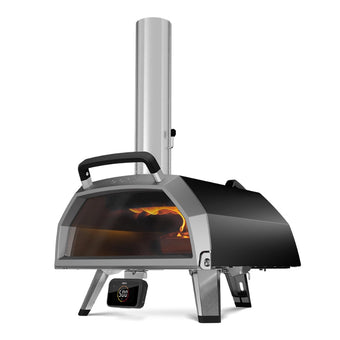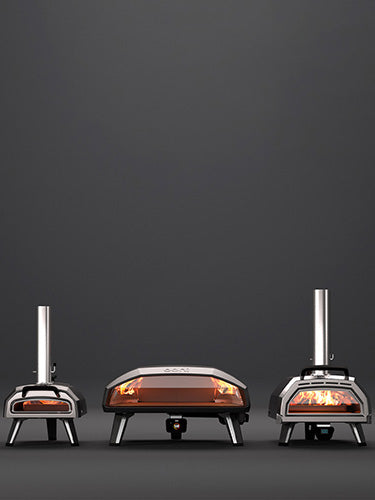Making pizza is both a science and a (delicious) art. While seemingly simple, it gets trickier once you enter the world of preferments – a mixture of flour, water, and yeast that's made in advance before mixing with the final dough. There are several types of preferments, but two of the most popular are biga and poolish. Added to your pizza dough, these can elevate your pizza's flavour, texture and quality.
If you’ve always wanted to know more about biga and poolish, how to make them (plus tons of recipe ideas), and why to use them, we’ve got you – and your dough – covered.
Is biga really better?
Perhaps you’ve heard the phrase ‘biga is better’ but have no idea what it is or why it matters in the context of pizza. According to acclaimed baker Ken Forkish, whose book, “Flour, Water, Salt, Yeast” was a New York Times bestseller and IACP Cookbook Award winner, “a biga is a term used in Italian baking for a pre-fermented dough culture. While there is no strict definition, it typically implies a mix of a somewhat stiff dough (60 to 70 percent water) made up of just flour, water, and a very small amount of yeast, which is allowed to ferment for six to 12 hours before being added to the final dough mix. The biga builds up a lot of flavour-producing gas (carbon dioxide and alcohol), acids, and bacteria. When it is added to the final dough mix, the result is bread that captures those flavours in a very good way.”
Depending on what kind of dough you’re aiming for, you’ll end up with a wet or dry biga. A wet biga will produce acetic acid (which makes bread taste sour) more quickly than a dry biga and is excellent for sourdough.
Pro tip: Use a wet biga if you want to make dough within 10 to 12 hours; a dry one if you'd like to wait longer and get more of that sour taste.
The main takeaway is that while a biga may be slightly drier and stiffer than a poolish (more on that later!), it’s also a bit easier to handle. Ready to make your own? Check out our biga dough recipe here. (After you’ve given biga a whirl, you can also try out some of Ken’s recipes, like his Pizza Dough Made From “Extra” Levain Starter or the delicious “I Slept in But I Want Pizza Tonight” Dough.)
More recipes to try:
Marinara Pizza
Pineapple Express Pizza
Beetroot and Feta Pizza
In praise of poolish
Now that you’ve got a handle on biga, you might be wondering: What’s the deal with poolish? According to Forkish,
“[...] a poolish is a pre-ferment added to the final dough mix to enhance flavour, in this case with buttery and nutty notes, and improve keeping due to the acidity that accumulates as the culture develops, typically for 6 to 12 hours. A poolish often contains 30 to 50 percent of the total flour in a recipe and generally contains equal amounts by weight of flour and water and a tiny amount of yeast.”
Depending on how much yeast you use, a poolish can be ready in as little as 3 hours, making it a great choice if you’ve got a tight schedule! For more insight, we turn to the pages of “Modernist Pizza” by the founder of Modernist Cuisine, Nathan Myhrvold, and head chef of Modernist Cuisine, Francisco Migoya:
“Poolish is a high-hydration (100%) preferment made from flour, water, and instant yeast. [...] One of the most common types of preferments, poolish is widely used by professional pizza makers in North America (though rarely by Italian pizzaioli, who generally prefer to make direct doughs). Because it is based on commercially manufactured yeast, it does not have the tangy flavour of a levain [sourdough starter].”
According to Migoya, poolish can be mixed and fermented at room temperature, doesn't need to be maintained, and, because of its wetness, is much easier to incorporate into the final dough than a biga. Adding a poolish to the dough will give you a shorter mix time and less dough development, making for a more visually appealing crumb.
Ready to make your own poolish? Check out our recipe below!
How to make a poolish
Makes six 12-inch (30-centimetre) pizzas
EQUIPMENT
- Stand mixer
- Ooni pizza oven
- Ooni Infrared Thermometer
- Ooni Pizza Cutter Wheel
- Ooni Pizza Dough Scraper
INGREDIENTS
Ingredients for the poolish:
- 350 grams “00” flour
- 350 grams water
- 2 grams instant dried yeast
Ingredients for the dough:
- 280 grams water
- 700 grams “00” flour
- 30 grams flaky sea salt
METHOD:
1. Mix the poolish: combine all ingredients and mix until the flour is completely incorporated. Store in an airtight container and let it proof for 12 hours.
Pro-tip: Poolish is generally quite sticky and thus challenging to manoeuvre with a rubber spatula or bowl scraper. Before taking it out of the bowl to measure it or add it to your dough, use your hands and dampen them in ice water. (The starter won't stick to your wet, cold hands.)
2. When ready to mix your dough, add the water and poolish to a stand mixer. In a separate bowl, mix the flour and salt together, then add it to the liquid mixture. Mix on medium-low speed until a dough forms, about 4 minutes.
3. Let the dough rest for 2 hours, then form into six 260-gram dough balls. Store overnight in the fridge. If you want to use the dough that same day, let it rest at room temperature for 4 to 6 hours or until the dough has doubled in size.
More recipes to try:
Sweet Pistachio and White Chocolate PizzaBlue Dessert Pizza with Spirulina, Coconut and White Chocolate
Calabrese Delight: Ricotta, Ham, Potato, Onion and Spicy Chilli Pepper Pizza







